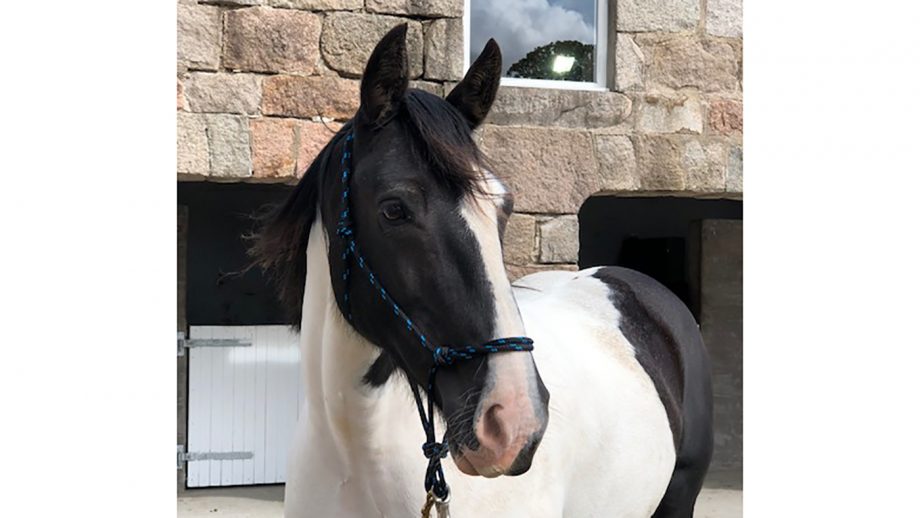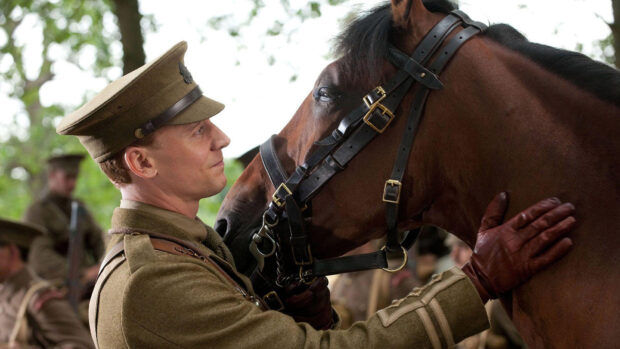Every day, our horses work for us tirelessly, teaching riding skills, providing therapy and promoting equestrianism. In the next part of this series, Sara Walker meets some of the horses and ponies who are Britain’s unsung heroes, such as Trinny from Twemlows Stud Farm
Twemlows Stud Farm is one of the largest studs in the country, breeding sports horses for mainly competition homes. It’s a family run business, set up 30 years ago by the current owner, Edward Matson’s, father.
“We’re a real one stop shop,” says Edward. “My brother runs the Stallion AI Services centre next door, and we run the AI, embryo transfer and foaling centre.
“We don’t have any stallions of our own, and you might think that’s strange for a stud, but modern breeding methods rely heavily on technology these days to make the process successful and efficient. We have over 300 client mares visiting during a season and have over 200 recipient mares to support the embryo transfer programme. We also take in mares for foaling, as their owners want them to foal here where we have the staff and specialised facilities.
“We use our ‘recipient mares’ to carry embryos from donor mares. If you have a mare who you didn’t want to stop riding or who you’d tried to breed from before unsuccessfully, but you still wanted to have a foal from her, then embryo transfer could be a good option. Once your mare has been inseminated, the vet will flush her eight days later and then confirm using a microscope that an embryo is present, this is then transferred into one of our recipient mares.
“Our recipient mares are a vital part of what we do here at Twemlows,” says Edward. “They usually come to us because they’re competition horses who have had career-ending injuries fairly early in life — some of them are as young as four or five. They then go on to have many years of a happy, peaceful life with us, living out on our 250-acre farm with 70 stables, top class facilities, three full-time vets and 25 staff. While our vets are specialists in equine gynaecological medicine, their priority is the welfare of all the horses at the stud. We only breed one foal every other year from each recipient mare, so they have a pretty good life! As responsible breeders, we’re aware of the equine homing crisis in the UK, so once our mares reach their mid to late teens they either go back to their original owners, or they’re quietly put down so that there’s no risk of them ending up in a bad situation. Two thirds of the horses we have would have otherwise been put down at the time of their injury, so they go on to have second careers with us.”
“Trinny came to us in 2011 as a recipient mare, when she was eight. She’s a 16.3hh Hanoverian who was bred for dressage but was injured and didn’t recover enough to be rideable,” explains stud manager, Nikee Hudson (pictured top with Trinny). “She bred two foals with us, and then in 2016 we realised where her talents really lay! Our method of weaning the foals here is designed to make the experience as stress-free as possible. We’ll put around 12 to 15 foals in a field with their mums, and put in one of our two ‘nanny mares’. Every other day, I’ll take out two of the mares. As it’s a gradual process, the foals barely notice. Eventually, they’re just left with Trinny, or her friend, Imogen. Trinny keeps the foals in check, providing a reassuring presence as well as the odd bit of discipline when it’s needed. I don’t know whether that’s a unique method of weaning, but it’s the way we like to do it as it doesn’t upset the foals.
Article continued below…

Britain’s unsung equine heroes: Polly — ‘she helps people become proud of who they are again’
Every day, our horses work for us tirelessly, teaching riding skills, providing therapy and promoting equestrianism. In our new series,

Britain’s unsung equine heroes: the 33-year-old riding school pony with no desire to retire
Every day, our horses work for us tirelessly, teaching riding skills, providing therapy and promoting equestrianism. In our new series,

Subscribe to Horse & Hound magazine today – and enjoy unlimited website access all year round
“Trinny is ideal for the job as she’s quiet and easy to handle, and is happy to tolerate 15 foals running around her! We’ve got a lovely photo taken a few years ago of all the foals laying round her in a group, looking up at her adoringly. She certainly makes our job a lot easier, as she’ll lead the foals around in a group for us.”
“Honestly, I wish we had 10 more like Trinny!” says Edward. “She weans a batch of foals for us a year, so that’s probably around 50 foals by now. She gives them a great start in life, and she’s a valuable member of the team.”
For all the latest news analysis, competition reports, interviews, features and much more, don’t miss Horse & Hound magazine, on sale every Thursday.




